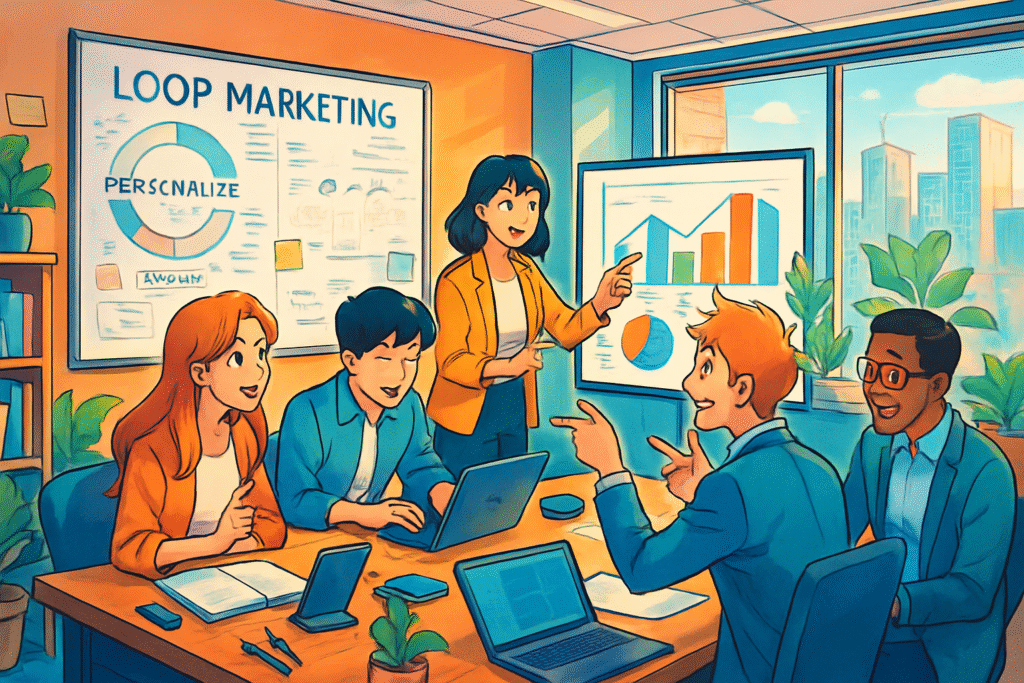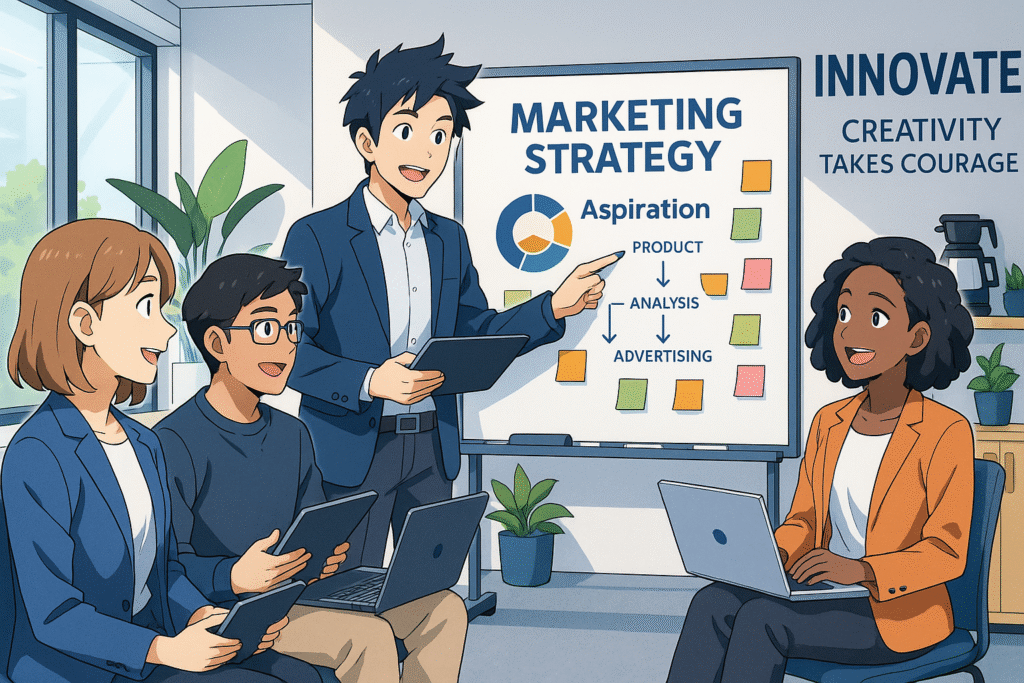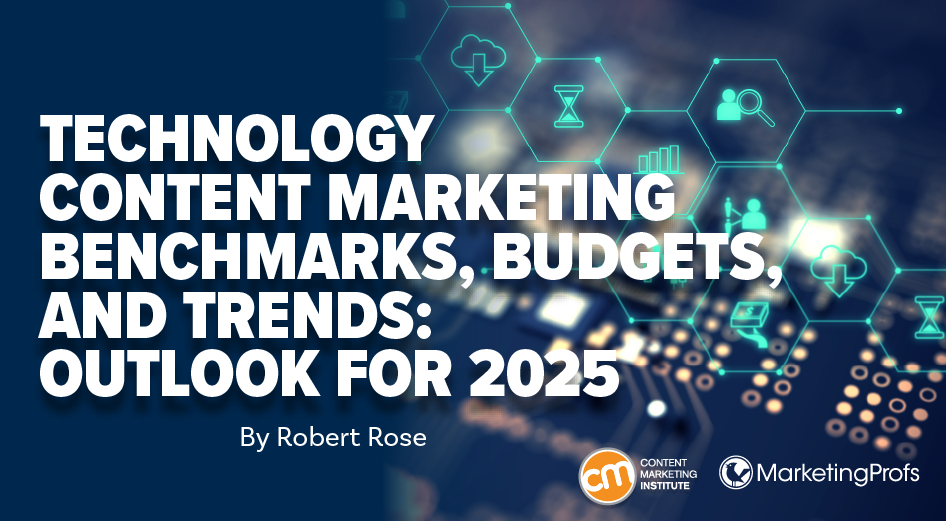What Happens In The Amplify Stage Of HubSpot Loop Marketing?

Combining AI’s power with the nuance that only human users can provide, HubSpot’s Loop Marketing strategy is a four-stage adaptive marketing framework that replaces the buyer’s funnel. As a continuous marketing cycle, it’s designed to help businesses grow and learn constantly, bringing together the smart help of AI with the real, human touch that makes your brand unique. In the Amplify stage, marketers spread their carefully crafted message as far as they can, ensuring it reaches the right people in all the right places, through voices they already trust.
Loop Marketing’s four main steps, Express, Tailor, Amplify, and Evolve, are designed to help businesses connect better with their customers, find them more efficiently, and constantly improve their marketing efforts. The stages form a continuous loop, working in concert in a system designed to improve itself as it goes.
Why the Marketing World is Changing So Much
Marketing is changing at an incredible speed. The old ways of reaching customers just aren’t effective anymore. The funnel approach worked well for years, moving customers from learning about a product to buying it. That old funnel has become leaky and less reliable with AI and how people use it to find information.
Your business has likely felt the effects of these big changes. For example, getting visitors to your website from search engines like Google has become much harder. Across the United States, websites have seen an average drop of nearly 60% in organic search traffic, which is the traffic that comes from search engines for free. Around the world, this decline is about 52%. This isn’t just a few isolated cases; it’s a huge trend affecting businesses everywhere.
This transformation results from our increasing reliance on AI-powered tools to discover information. Before AI, search engine searches would provide sources users can visit to learn the information they seek. AI, however, often displays the information directly at the top of the search results page. For many searches, navigating to a website to get its information is unnecessary. This has led to a sharp uptick in zero-click searches, with nearly 60% of Google searches ending without site visits.
Industry research indicates this trend will accelerate. By 2028, businesses are expected to see organic search traffic drop by half or more as generative AI tools become the first stop for information. By 2026, reliance on traditional search engines is forecasted to fall by 25%, as more users adopt AI chatbots for faster, more context-specific answers. Additionally, Google’s Search Generative Experience is projected to cut organic traffic further by 20%–60%, shifting billions away from legacy channels. These AI-driven overviews dominate the available space on search results pages—sometimes spanning up to 800 pixels—making it even harder for conventional web listings to capture attention.
Rethinking marketing strategies is essential to building maximum visibility, rapid customer engagement, and real credibility. This shift is dramatic for marketers. Knowing how buyers seek and trust information has made authenticity, agility, and real-time insight vital for modern marketers.
The Heart of Loop Marketing: The Amplify Stage
In the Express stage, you’ve clearly defined your brand’s unique voice and identified and gained an understanding of your audience. The Tailor stage customizes the messaging to create a personalized experience that delights your audience. In the amplify stage, you’re working to spread your unique story into the larger world. Creating great content is still vital, but you have to ensure it’s seen and heard by the right people, in the right places, and through the right messengers.
As a modern marketer, you can’t just count on buyers visiting your website anymore. They need an AI-powered referral. Users ask their preferred AI platforms for recommendations for YouTube videos, get recommendations from online creators they trust, read reviews on community sites, and talk with friends. The Amplify stage helps you meet these buyers in those spaces, where they already are, pushing you to share your message across many different channels and through trusted voices. Amplify is a key part of the adaptive marketing framework that helps your brand get recommended, not just ranked.
What You Do in the Amplify Stage
The Amplify stage involves several important steps, all focused on getting your brand’s unique story and personalized messages out to a wider, more engaged audience:
-
Diversify Channel Mix. Spread your content across different platforms, extend your reach, and meet (or discover) your audience in places they frequent. This means diversifying beyond your website or typical social media pages. You need to be where your audience is spending their time.
A crucial part of this is using AI visibility in search, also known as AI Engine Optimization (AEO). This means ensuring your content is easily found and recommended by AI search tools and large language models like ChatGPT.
Tools like HubSpot’s AEO Grader can help you check how well your existing content is set up for AI and suggest ways to improve it. This helps protect your content and ensures AI tools learn from your best information. HubSpot also has an AEO strategy tool that analyzes your website’s topics and suggests new content to increase your visibility in AI-powered search.
-
Engage Buyers in Real Time. When prospects land on your website, especially on important pages like pricing or comparison pages, you want them to have a smooth, helpful experience. Having 24/7 AI-powered support, answering questions quickly, and qualifying potential customers make conversions easier for users. You should focus on making the most of high-intent visitors ready to act.
-
Activate Trusted Creators. Users often trust recommendations from real people more than traditional ads. By partnering with relevant content creators, influencers, and experts whose voices your audience already follows and trusts, you amplify your voice and extend your reach.
You’re not just paying someone to talk about your product; you’re building credibility and forming authentic relationships and conversations where users become customers. This approach supports creator economy alignment, where brands and creators work together to reach new audiences.
-
Scale Content Production with AI. Creating content for many different platforms can take a lot of time and energy. But AI can help you create and adapt content quickly. For example, HubSpot’s Marketing Studio can help you plan and create different kinds of content for many channels based on one main idea.
If you have longer videos, a video clip search agent can find the best parts, and a clip editor can turn them into shorter clips. This allows you to create videos of the perfect length for social media with minimal work. This generates more content faster without losing your brand’s unique voice.
-
Launch Next-Gen Advertising. Paid advertising is still an effective way to boost engagement, but it needs to be smarter. Ad tools like Google PMax Integration and AI-Powered Ad Builder can help you create targeted, AI-generated video ads that get your message to the right people across search, social media, and display networks. This ensures your ad spending maximizes its effectiveness, reaching audiences most likely to convert.
-
Shape Each Touchpoint for Action. Every piece of content and each interaction should have a clear purpose. Clear, easy-to-understand calls to action (CTAs) make your intentions obvious and help guide the customer where to go next. Creating a friction-free flow where every step feels natural and simple for the user leads to increased conversions.
Video content is more important than ever. About 95% of marketers now see video as a key part of their strategy. Among consumers, 83% want brand videos and 78% prefer shorter content.
Why Amplifying Content Matters So Much
The marketing landscape has seen a power shift away from big brands, empowering individual creators who build credibility through trusted humans rather than corporate websites. Spreading your message helps you build relationships and make your organization a trusted voice where you don’t just reach more people; you reach the right people through channels that have real influence and build trust. The goal isn’t just to rank high in search results anymore. It’s to be recommended by the people and tools your audience trusts most.
Even as organic search traffic continues to nosedive, companies like HubSpot have shown that a diversified approach can lead to impressive growth. HubSpot reported a total revenue of $2.63 billion in 2024, a 21% increase from 2023. They’re shrugging off organic traffic drops, adapting and diversifying their channels, and achieving strong financial results.
Video content is more important than ever. About 95% of marketers now see video as a key strategy. Among consumers, 83% want to see brand videos and 78% prefer shorter content. This highlights the need to “remix” your content into different formats, especially video, for different channels.
How We Measure Success in the Amplify Stage
When working through the amplify stage, conversions are your main measure of success. Conversions are the easiest way to know your marketing efforts are turning viewers into leads or customers, and
Here are some key areas to measure and improve conversions:
-
Conversion rate per channel: How each channel performs is key to understanding your strategy in the future and where (and if) you should focus your attention. You can explore ways to increase engagement if a channel isn’t performing. You can eliminate the channel if those efforts aren’t worth the trouble.
-
AI visibility: How often is your brand mentioned when AI tools respond to user questions? If you’re optimizing appropriately for AI, your visibility should increase steadily.
-
AI Share of Voice: This measures how often your brand is mentioned by AI compared to your competitors. You should be focusing on increasing your mentions.
-
Number of Citations: This counts how often your website is directly mentioned or linked to in AI responses. A higher number means better AI visibility in search.
By focusing on these metrics, businesses can ensure their efforts in spreading their message are genuinely effective, leading to higher-quality leads and more sales. This helps build a strong momentum-building system that constantly improves.
Loop Marketing: The Future is Here
The amplify stage is vital to a strong Loop Marketing framework. If you want your business to thrive, you should be shifting to this new model sooner rather than later. Leveraging Loop’s momentum-building system allows you to build on the previous step, making each cycle stronger than the previous.
HubSpot customers using a Loop Marketing approach are already seeing big gains: in just one year, they get 129% more leads, close 36% more deals, and see a 37% improvement in how quickly they solve customer problems. They’re also reporting faster content creation, higher engagement rates, better conversion rates, and lower costs of acquiring new customers, often within 30 to 60 days.
The Other Stages of Loop Marketing
-
Express Stage: In the Express stage, you determine your brand’s unique story and point of view. By building a better understanding of your ideal customers and what they care about, you can later tailor content they will love.
Start by creating a style guide that teaches your AI tools to speak in your brand’s voice. The Express stage turns AI from merely a content machine into a high-performing growth engine, compounding insights that build a competitive edge for your brand.
Tailor Stage: Building on the solid foundation of your ideal customer profile and brand style guide established during the Express phase, in the tailor stage, you craft messaging that resonates on a personal level. Marketers can deliver highly relevant, context-aware experiences at scale by tapping into integrated customer data and leveraging AI. Above merely personalizing, this stage highlights precision.
The goal is to make each prospect feel truly seen and heard. With solid groundwork laid in the Express phase, each tailored interaction still carries your brand’s distinct voice and personality while speaking to the customer on a personal level.
Evolve Stage: In the Evolve stage, you constantly learn and adjust marketing plans based on performance. Refining your tactics based on metrics and experimentation allows you to make real-time improvements, not just measure campaign results.
Each campaign becomes a learning lesson, making you leaner and more agile, compounding insights, and building a more decisive competitive advantage with every cycle.
Spreading Your Story Far and Wide
The Amplify stage helps you move beyond simply creating content to strategically sharing it in ways that build relationships with your audience. By embracing new channels, partnering with trusted voices, and using AI to scale your efforts, you ensure your message reaches its intended targets and positions them to buy.
In a world where customers have more choices and expect more, the Loop Marketing framework is essential. By amplifying those messages, you’re building genuine relationships and creating a system that helps your business succeed now and into the future.
Need a hand? Connect with one of our HubSpot-AI-certified consultants to see if you’re a fit for Loop Marketing.






